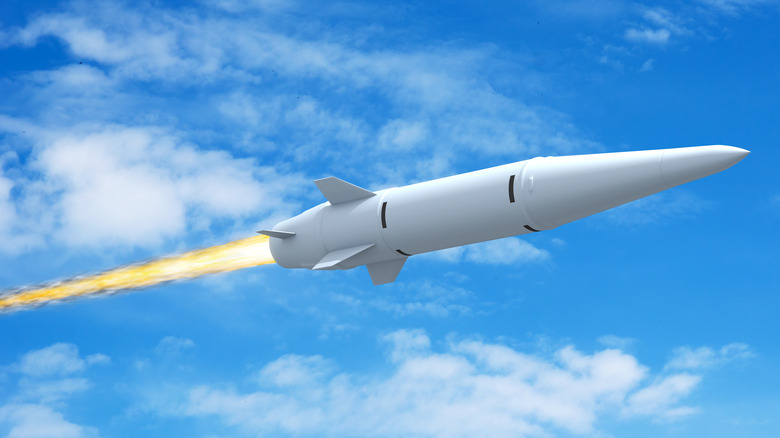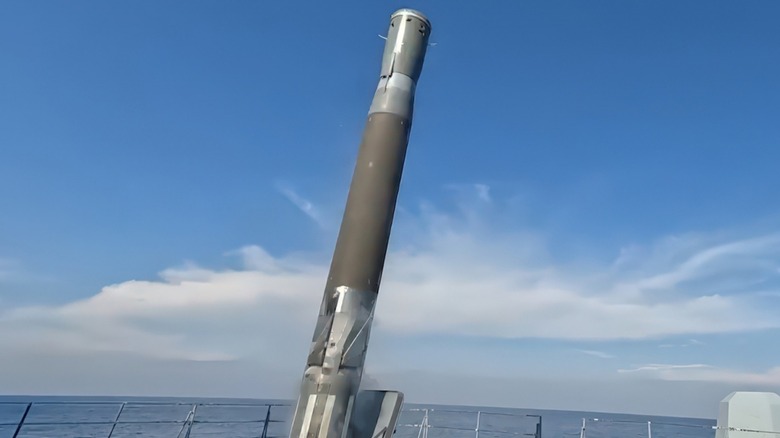What Is The Fastest Hypersonic Missile In The World? (And Who Owns It?)
Speed is paramount in designing missiles, so engineers have worked for years to improve how fast a missile can fly. The goal is to strike a target without warning, so the faster an object, the harder it is to intercept. Hypersonic missiles are classified as such if they're capable of reaching Mach 5-plus (3,836 mph). Several types have arisen, including hypersonic boost-glide vehicles, hypersonic cruise missiles, and railgun-launched projectiles.
Each of these areas is constantly developing around the world, including in the U.S., but the West is behind in developing them because the Russian Federation figured out the technology first. That said, technically, hypersonic missiles have been around since the 1940s and '50s, when the U.S. developed the Bumper rocket. Large weapons like intercontinental ballistic missiles (ICBMs) are also hypersonic, but when people talk about hypersonic missiles these days, they're primarily discussing hypersonic cruise missiles.
Russia developed the 3M22 Zircon scramjet-powered hypersonic cruise missile and likely used it against Ukraine during an attack on Feb. 7, 2024. These missiles are believed to be able to reach Mach 8-plus (6,138 mph), making them all but impossible to shoot down with current technology. Russian President Vladimir Putin claimed it could reach Mach 9 (6,905 mph) with a range of 620 miles, but that cannot be confirmed. Other nations, including France, India, the United Kingdom, Japan, South Korea, North Korea, Iran, Brazil, and China, are hard at work developing their own, with some having completed projects, though it's unclear if they're in use.
Russia's 3M22 Zircon
Hypersonic missiles are fast, and the 3M22 Zircon's advertised speed makes it the planet's fastest hypersonic cruise missile — for now. It's powered by a ramjet engine, also called a scramjet, but because it's held by a foreign nation, there's not a lot of information available about it. What is known is that the Russians tested a Zircon around 2017 and placed one in service in 2023 aboard the frigate Admiral Gorshkov. It's already been used in combat.
The Zircon was designed as an anti-ship missile, so its land-attack role is secondary. The Russians released footage of it launching from a naval ship in 2020 during a test, but haven't added much information. It's a two-stage missile, where one stage uses a solid fuel, while the other uses a scramjet. It's anyone's guess how many Zircons Russia has, though it's likely they're being armed on a variety of surface vessels.
Russia also has a ballistic missile, the Kh-47M2 Kinzhal, which has been used in combat and is said to reach Mach 10 (7,673 mph), though this isn't confirmed. China has a hypersonic cruise missile, the DF-17, with an unconfirmed speed range between Mach 5 and 10. Reminiscent of Sputnik I flying high overhead in October 1957, folks in the West took notice of these missiles. Not only are Western nations working hard to develop their own hypersonic cruise missiles and glide vehicles, but they're also working on anti-missile technology to thwart the ones already in service.

